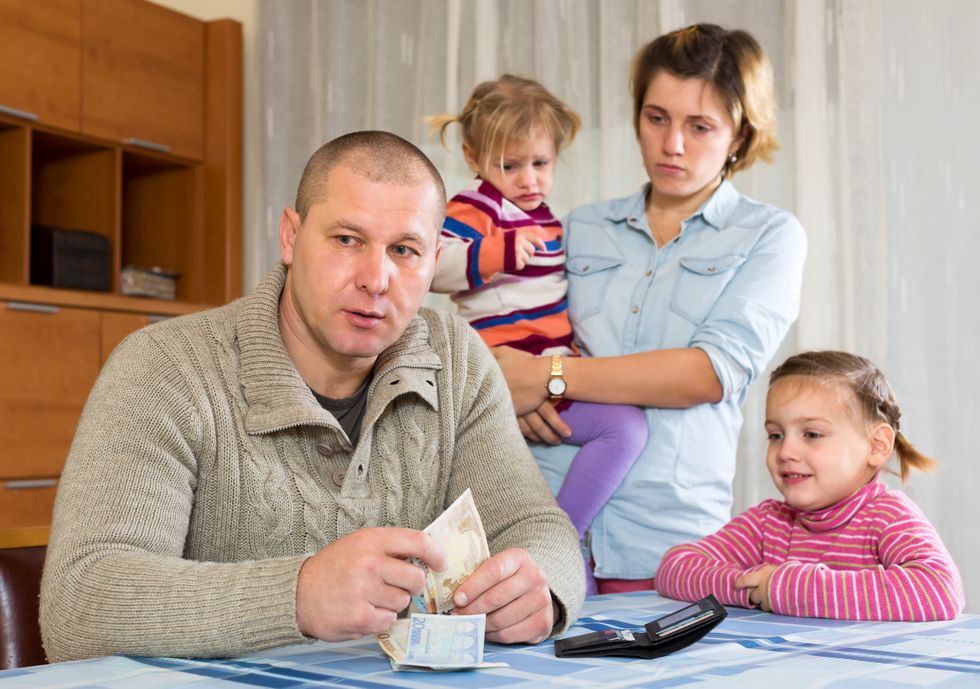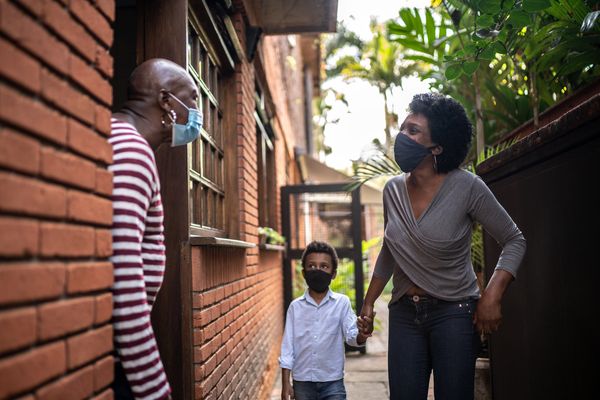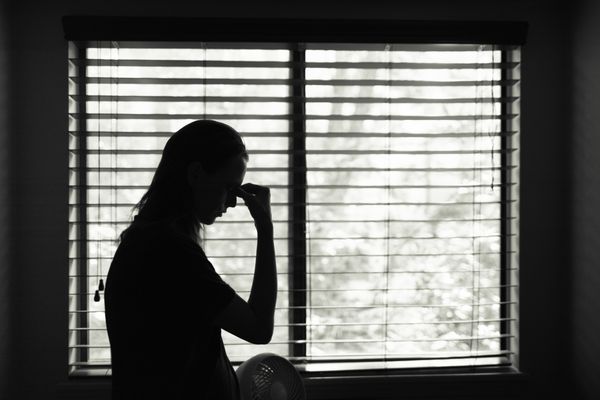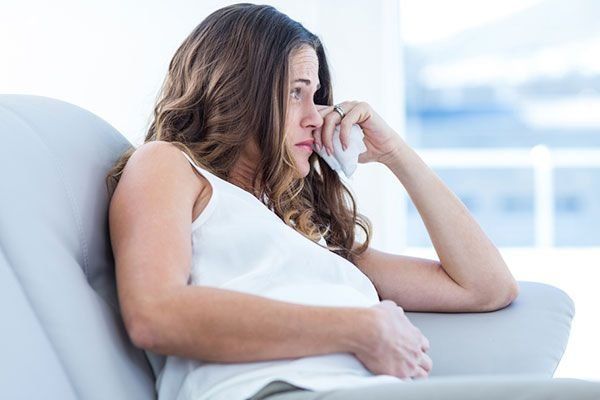By Riana Fisher, SWHR Science Department Intern
"It starts out little by little," domestic violence expert Dr. Ludy Green said, as she described the typical pattern of financial abuse. "This is a concept that the general public is not yet familiar with, which makes it harder to recognize, treat and study than physical abuse" said Dr. Green.[1]
After witnessing firsthand the damage caused by financial abuse, Dr. Green founded Second Chance Employment Services (SCES), a nonprofit organization that helps promote financial security for survivors of domestic violence.
The general public's lack of familiarity with this type of abuse severely harms its victims. While 30 percent of women experience domestic violence during their lifetime,[2] approximately 94 percent of domestic violence survivors have also experienced financial abuse.[3]
What is financial abuse?
Like all forms of domestic violence, financial exploitation comes in complex and varying forms. It can involve the abuser building up debt in his/her partner's name, not allowing the victim to hold a job, limiting the victim to a small allowance, controlling household income or lying about shared assets. It can include sabotaging the victim's property by disabling their car, destroying their work clothing or deactivating their cell phone. Financial abuse can even escalate to damaging the victim's health by withholding necessary medications or not providing enough money for food and personal hygiene products.[4]
The abuse often begins with benign proposals, but slowly and deliberately the abuser takes away the victim's power until nothing belongs to her, said Dr. Green.[1]
Often, the abuser offers to control household finances, take over credit cards or make all assets jointly held. The exploitation advances as the abuser convinces the victim that she doesn't need to keep her job, forces her to quit or harasses her at work until she is fired.
An estimated 21 percent to 60 percent of victims of domestic violence lose their jobs due to reasons associated with abuse,[5] adding up to approximately 8 million paid days of work lost each year in the United States.[6] Seemingly harmless actions can escalate until the victim is left dependent, isolated and powerless against their abuser.
The emotional effects
While some of the effects of financial abuse are obvious and immediate, others take much longer to manifest. For example, imagine the anxiety a mother bears when she is uncertain if she has enough money to feed her child. Imagine the fear a mother endures when she doesn't have the financial means to take her sick child to a health care provider or pay for necessary medications.
The emotional burden doesn't necessarily end when the victim leaves the relationship. Victims can struggle for years afterward to buy property if their credit score was ruined by their abuser or secure new employment if their reputation with their last employer was tarnished because of harassment from their abuser.
Not only do stress, anxiety and fear follow survivors of domestic abuse for the rest of their lives, they also report having two times as many chronic health conditions as women who haven't experienced abuse.[7] Victims are more likely to report conditions such as activity limitations, asthma, binge drinking, joint disease, smoking,[8] diabetes, irritable bowel syndrome[2] and other adverse health outcomes.
Despite how detrimental domestic abuse can be to a victim's health, financial instability often compels victims to stay. Studies suggest that victims who lack financial stability are more likely to return to their abuser.[9]
Dr. Green says women come to SCES with full understanding that they were victims of domestic violence and describe the physical abuse for exactly what it is. However, they tell her that they stayed in the relationship because "they were trapped financially in a domestic prison, of which they had previously seen no way out."[1]
A way out
SCES services include resume building, employment counseling and interview preparation, with the ultimate goal of placing women on long-term career paths that provide stability and room to grow. The path to financial independence requires time, resources and support that survivors of domestic violence often lack, but through the work of organizations like SCES, they have the tools to end the cycle of abuse.
The Society for Women's Health Research (SWHR®) is studying the link between domestic violence and chronic diseases and educating the public on this dangerous link with their recently launched campaign, "Beyond the Bruises."
References:
1. Green L. "Society for Women's Health Research, Interview with Dr. Ludy Green." Telephone interview. 16 July 2015.
2. Black MC, Basile KC, Breiding MJ, et al. The National Intimate Partner and Sexual Violence Survey (NISVS): 2010 Summary Report. Atlanta, GA: National Center for Injury Prevention and Control, Centers for Disease Control and Prevention. 2011.Retrieved from: https://www.cdc.gov/violenceprevention/pdf/nisvs_report2010-a.pdf.
3. Postmus JL, Plummer SB, McMahon S, Murshid NS, Kim MS. "Understanding Economic Abuse in the Lives of Survivors." Journal of Interpersonal Violence. 2012;27:411-430. Retrieved from: https://jiv.sagepub.com/content/27/3/411.
4. Adams AE, Sullivan CM, Bybee D, Greeson MR. "Development of the Scale of Economic Abuse." Violence Against Women. 2008;14:563-588. Retrieved from: https://wbg.org.uk/GBA_Present_2_2951060362.pdf.
5. Rothman EF, Hathaway J, Stidsen A, de Vries HF. "How Employment Helps Female Victims of Intimate Partner Violence: A Qualitative Study." Journal of Occupational Health Psychology. 2007;12:136-143. Retrieved from: https://psycnet.apa.org/journals/ocp/12/2/136/.
6. National Center for Injury Prevention and Control. Costs of Intimate Partner Violence Against Women in the United States. Atlanta (GA): Centers for Disease Control and Prevention; 2003.Retrieved from: https://www.cdc.gov/violenceprevention/pdf/IPVBook-a.pdf.
7. Verizon Foundation and More Magazine Survey, October 2013.Retrieved from: https://www.verizon.com/about/sites/default/files/Survey-Results-Domestic-Violence-%26-Chronic-Health.pdf.
8. Breiding MJ, Black MC, Ryan GW. "Chronic Disease and Health Risk Behaviors Associated with Intimate Partner Violence—18 U.S. States/Territories, 2005." Annals of Epidemiology 2008;18:538-544. Retrieved from: https://www.annalsofepidemiology.org/article/S1047-2797(08)00048-3/abstract.
9. VanDeMark NR. "Policy on Reintegration of Women With Histories of Substance Abuse: A Mixed Methods Study of Predictors of Relapse and Facilitators of Recovery." Substance Abuse Treatment, Prevention, and Policy. 2007;2:28. Retrieved from: https://www.substanceabusepolicy.com/content/2/1/28.
The Society for Women's Health Research is the thought leader in the study of sex differences, dedicated to transforming women's health through science, advocacy and education.
Follow Society for Women's Health Research on Twitter: www.twitter.com/SWHR
More:
Domestic Violence
Women's Health
Women's Empowerment
Violence Against Women
Sexual Violence







